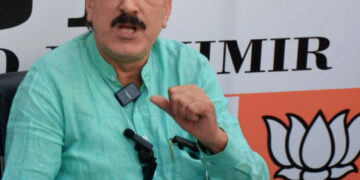Srinagar: Jammu and Kashmir has covered 81 per cent of its rural households with tap water connections, with Srinagar and Ganderbal districts achieving 100 per cent, as per official data.
The data accessed by the news agency KNO states that out of 19.26 lakh rural households in the Union Territory, 15.63 lakh have functional tap connections. The remaining 3.63 lakh households receive water through public stand posts installed under earlier schemes.
The Jal Shakti Department said 3253 schemes were taken up under Jal Jeevan Mission at a cost of more than Rs 13,334 crore. Of these, 1480 schemes are functional. Another 1,600 schemes have crossed the halfway mark.
The department said the remaining schemes are tied to the extended phase of the Mission and will move once funds from the Centre and the UT Government are released.
The data shows uneven progress across districts.
Srinagar and Ganderbal have achieved full coverage, while Anantnag has 9558 households pending. Shopian has 3,531, and Reasi has 7,210.
Similarly, Baramulla has provided 1.29 lakh connections, with 16845 rural households still waiting for tap water. Budgam district has 13,777 pending households, Pulwama has 11,530, Kulgam has 5,598, and Bandipora has 5,130.
Kupwara district has the highest shortfall in the Kashmir region. The district has 27,159 rural households yet to be connected.
In the Jammu region, Doda district has 26,757 households yet to be connected, while Poonch has 22077, Ramban has 12,141, Udhampur has 20,589, and Kishtwar has 3,189.
Kathua has 35,064, while Samba district has 23,864. Similarly, Jammu district has 62,950 pending households, the highest shortfall in the division, while Rajouri has 44,759—(KNO)
…and how safe is the water?
Though the Jammu and Kashmir has covered 81 per cent of its rural households with tap water connections, a serious question, the authorities should answer, how much of the water is healthy and filtered.
Reports pouring in from all over Kashmir suggest that most of the filtration plants are either defunct or not properly maintained and water to the taps is supplies from direct sources, without any filtration.
If this is the case, how can the concerned authorities pat their shoulders, question consumers.
“Near Drang, water pipes have been laid to supply water to Tangmarg villages. The supply is direct, it doesn’t go to any filtration plant,” said a local.
Similar kind of reports are coming in from south, center and north. The filtration is the problem and the concerned department is doing nothing to address the issue, say consumers.







